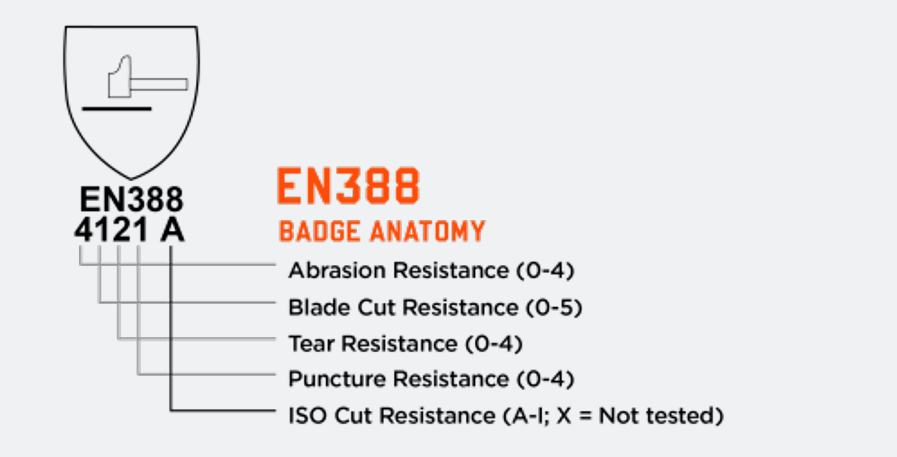Safety gloves are essential for protecting workers’ hands in various industries and environments. Different standards ensure that gloves provide adequate protection against specific hazards. Here’s an overview of some key safety glove standards:
International Standards
- EN 420 (General Requirements)
- Applies to all protective gloves.
- Specifies requirements for glove design, construction, innocuousness, comfort, efficiency, and marking.
- EN 388 (Mechanical Risks)
- Protection against mechanical hazards such as abrasion, blade cuts, tears, and punctures.
- Performance levels are indicated by a series of numbers (e.g., 4 5 4 3) representing resistance to abrasion, cuts, tears, and punctures respectively.
- Recently updated to include ISO 13997 cut resistance testing and impact protection.

- EN 374 (Chemical Risks)
- Protection against chemicals and microorganisms.
- Gloves are tested for penetration, permeation, and degradation by chemicals.
- Performance levels indicate protection against specific chemicals.
- EN 407 (Thermal Risks)
- Protection against heat and flame.
- Covers resistance to flammability, contact heat, convective heat, radiant heat, small splashes of molten metal, and large quantities of molten metal.
- EN 511 (Cold Risks)
- Protection against cold environments.
- Includes testing for convective cold, contact cold, and water penetration.
American Standards
- ANSI/ISEA 105
- Standard for hand protection in North America.
- Specifies classifications and testing for cut resistance, puncture resistance, abrasion resistance, chemical permeation, and other properties.
- Ratings range from A1 to A9 for cut resistance, with higher numbers indicating greater protection.
- ASTM D120
- Standard specification for rubber insulating gloves.
- Specifies requirements for physical and electrical properties of insulating gloves for electrical work.
- NFPA 70E
- Standard for electrical safety in the workplace.
- Specifies requirements for gloves used in environments with electrical hazards.
Specific Considerations
- Food Handling
- Gloves for food handling must comply with regulations like the FDA’s Code of Federal Regulations (CFR) Title 21, which ensures that materials used in gloves are safe for contact with food.
- Medical Gloves
- Must meet standards such as ASTM D6319 for nitrile gloves and ASTM D3578 for latex gloves.
- Regulated by bodies like the FDA, ensuring they are safe and effective for medical use.
- Firefighting Gloves
- Must meet NFPA 1971 standard for protective ensembles for structural firefighting and proximity firefighting.
Markings and Labeling
- CE Marking: Indicates conformity with health, safety, and environmental protection standards for products sold within the European Economic Area (EEA).
- Glove Markings: Typically include the standard they conform to (e.g., EN 388), performance levels, manufacturer information, and size.
Key Selection Criteria
- Hazard Type: Match gloves to specific risks (e.g., EN 374 for chemicals, EN 388 for cuts).
- Certification Marks: Look for EN/ISO/ASTM labels.
- Fit & Comfort: Ensure dexterity (e.g., thinner gloves for precision tasks).
Understanding these standards is crucial for selecting the right gloves for specific tasks and environments, ensuring optimal protection and compliance with regulatory requirements.

